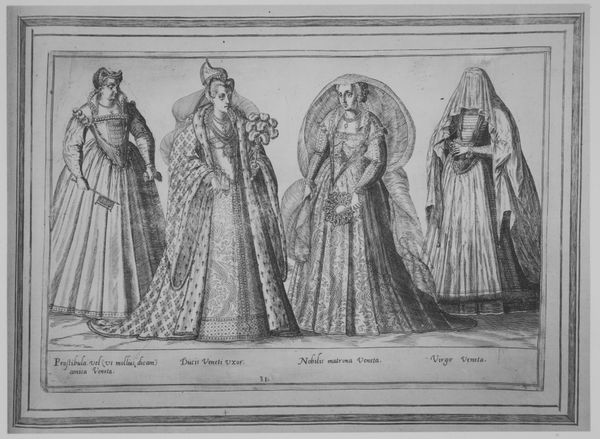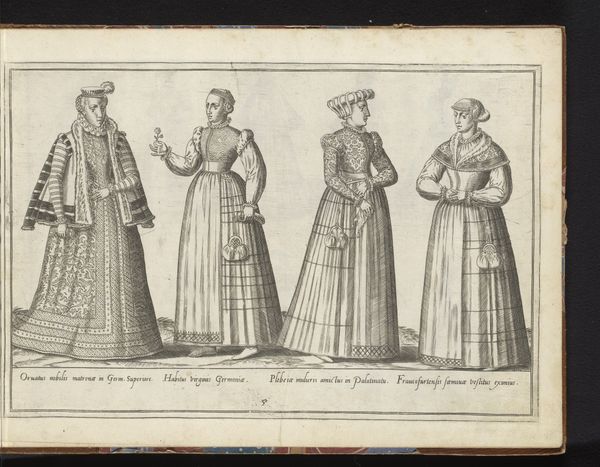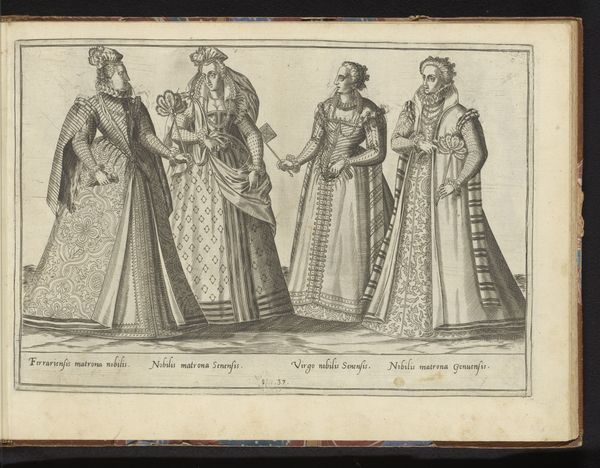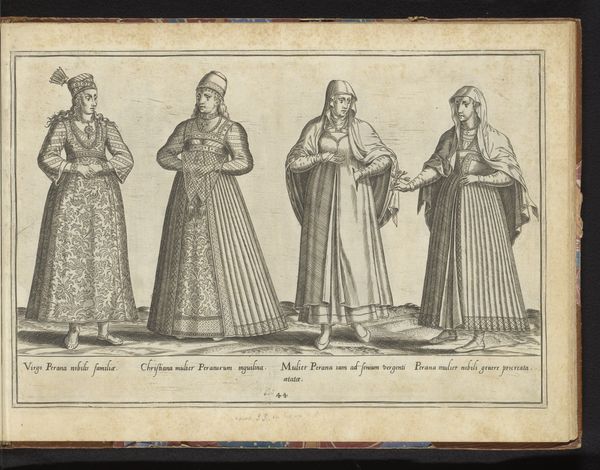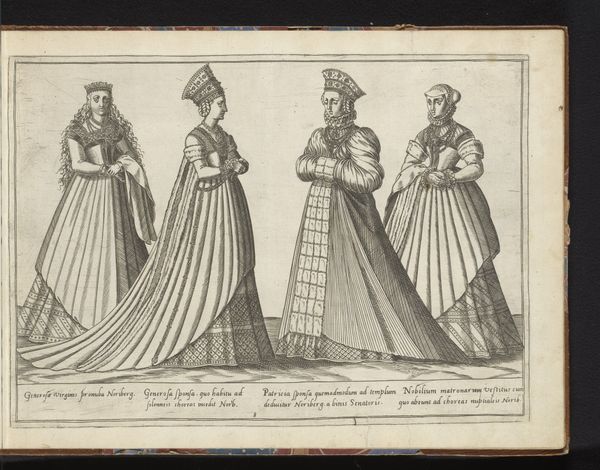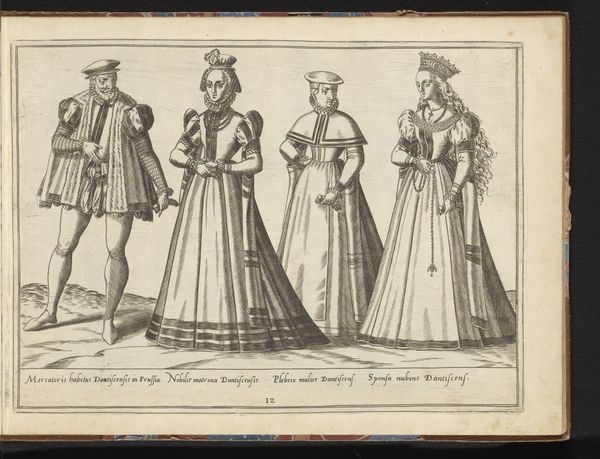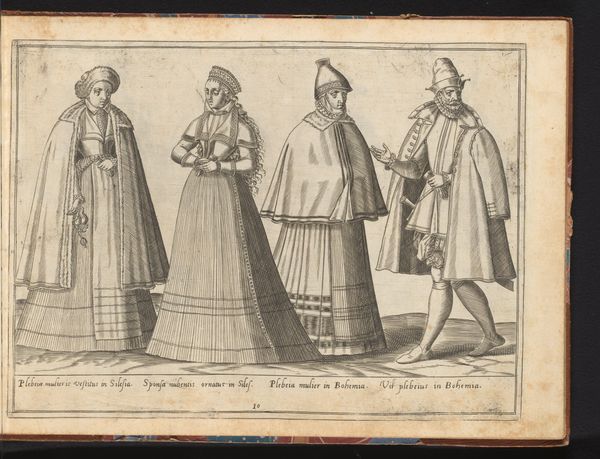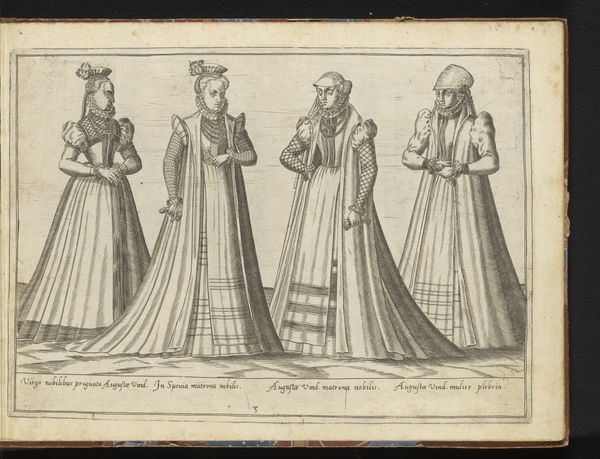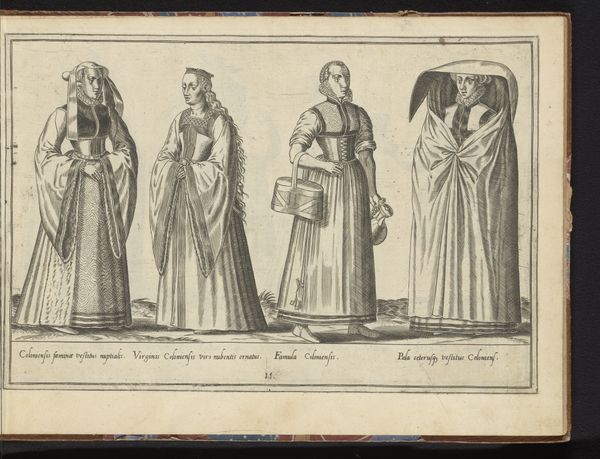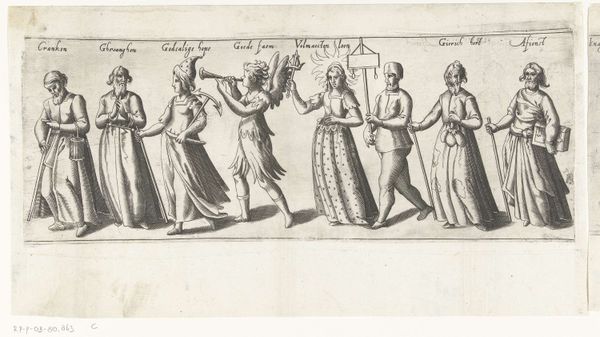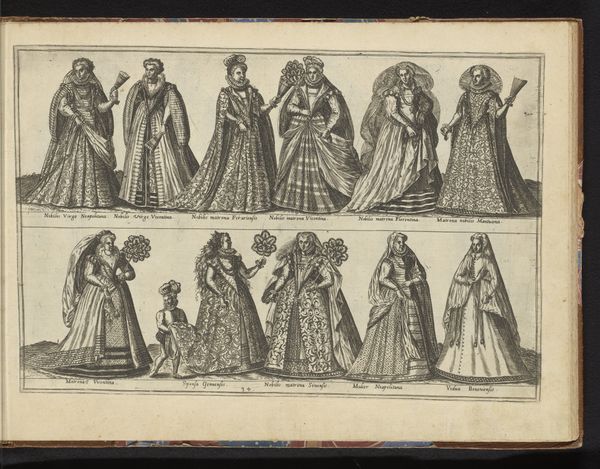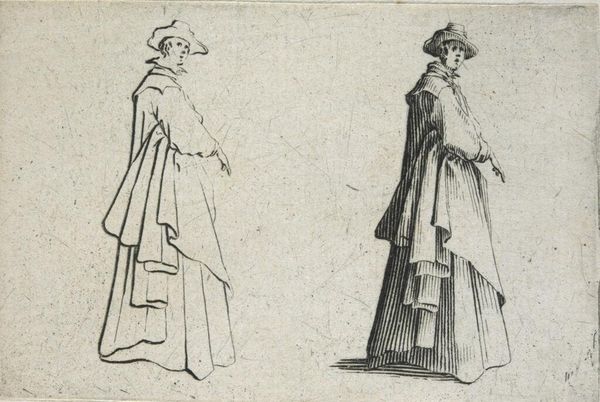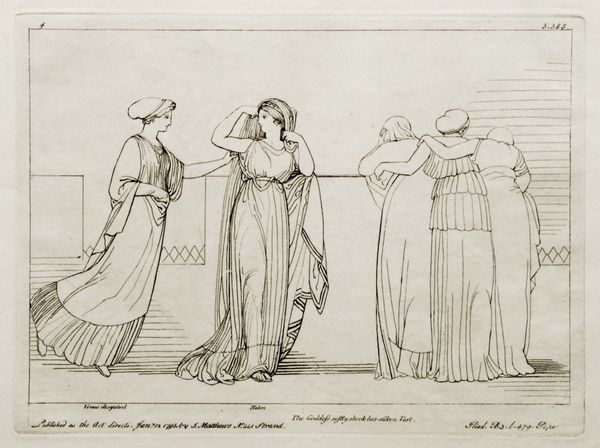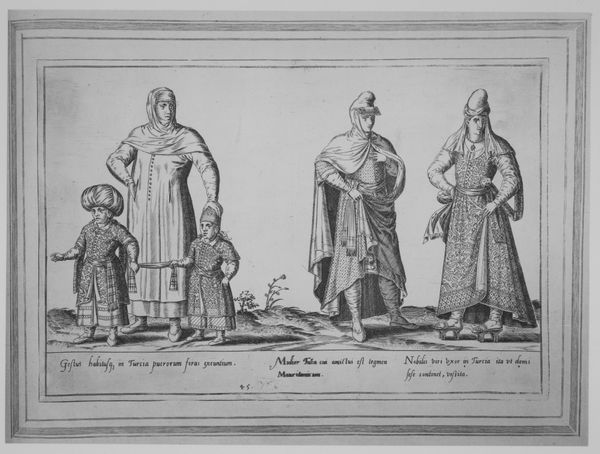
drawing, print, engraving
#
portrait
#
drawing
# print
#
11_renaissance
#
group-portraits
#
northern-renaissance
#
engraving
Dimensions: 222 mm (height) x 313 mm (width) (bladmaal)
Melchior Lorck made this print, Ten Women from Stralsund, sometime in the mid-16th century. Lorck, an artist and diplomat during the Renaissance, traveled extensively, and his work often reflects the cultural observations he made along the way. In this piece, Lorck presents a study of the clothing and status of women in the Northern German city of Stralsund. The women stand shoulder to shoulder, adorned in elaborate dresses and headdresses that signify their identity and social standing within their community. Lorck’s detailed rendering of their garments provides a glimpse into the lives of these women, their roles, and their place within the economic structure of their time. What does it mean to witness this assembly? To what extent does it convey how the society of Stralsund constrained or celebrated women? Perhaps the artist is less concerned with portraying individual stories, and more interested in documenting the visual markers of gender and class.
Comments
statensmuseumforkunst almost 2 years ago
⋮
Ten Women of Stralsund belongs to a group of drawings that were presumably done as studies for woodcuts for a projected book about the history of clothes. Ten women are lined up, showing attire from the 1600th century. The women’s poses allow Melchior Lorck to display their garb from all angles while also creating excellent rhythm within the composition. The history of the drawing The drawing is executed with precision in pen and brown ink. It was exhibited at the Department of Prints and Drawings in 1962 and subsequently bought from the English Evelyn Collection. The artist Lorck Lorck is the first artist of Danish origin whose artistic production is extensively documented. His connections with King Christian 3. (1503-1559) and the emperor Ferdinand 1. (1503-1564) took him far and wide in the world. Lorck recorded his impressions on paper. His circle of motifs was wide-ranging, spanning urban scenes, architecture, scenes of everyday life, and studies of clothes, weapons, tools, and portraits. Inspired by Cranahc and Dürer The drawings would later be translated into woodcuts and copperplates and published in books. Surviving drawings, woodcuts, and copperplates from his youth and study tours show how he was inspired by Lucas Cranach (1472-1553) and Albrecht Dürer (1471-1528).
Join the conversation
Join millions of artists and users on Artera today and experience the ultimate creative platform.
